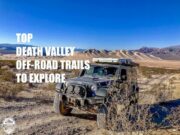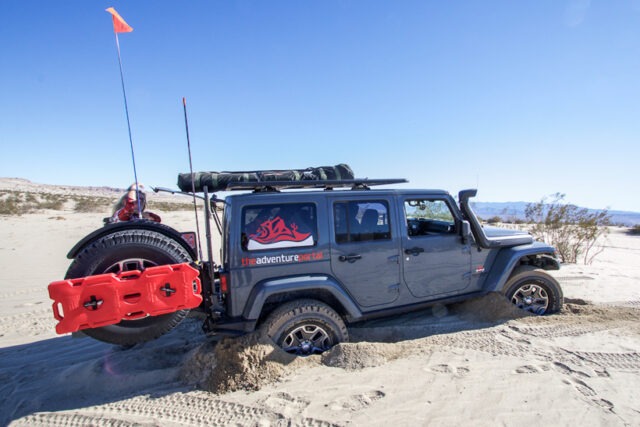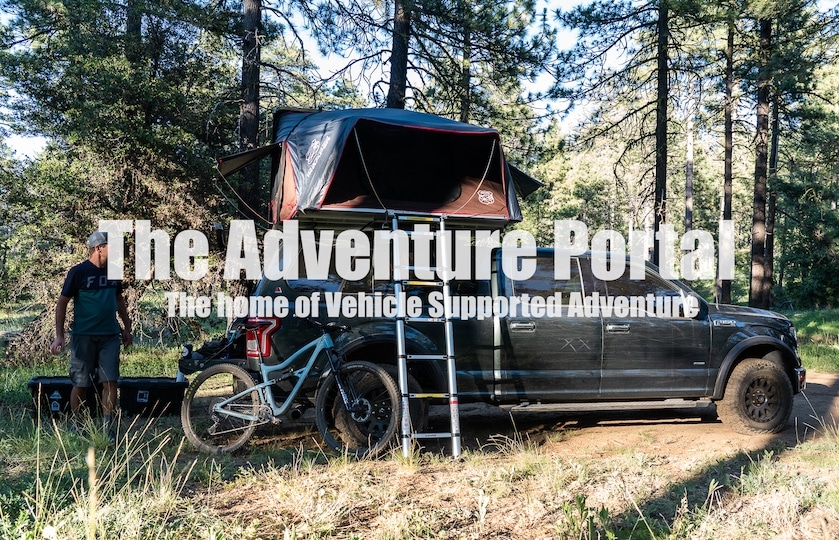TAP Editor’s Note: The following is part one of a three-part series on off-road recovery. The author, Bob Wohlers, teaches government, corporate, and recreational off-roading as a full time profession. He is one of only a handful of fulltime 4WD trainers in the USA. Some of the content in this multi-part series comes from Bob’s book The Total Approach to Getting Unstuck Off Road – 4WD Self-Recovery & Vehicle-Assisted Recovery. While other authors of 4WD books try to cover the topic of recovery in a single chapter, Bob has the only complete book on the topic – 352 pages of step-by-step information.
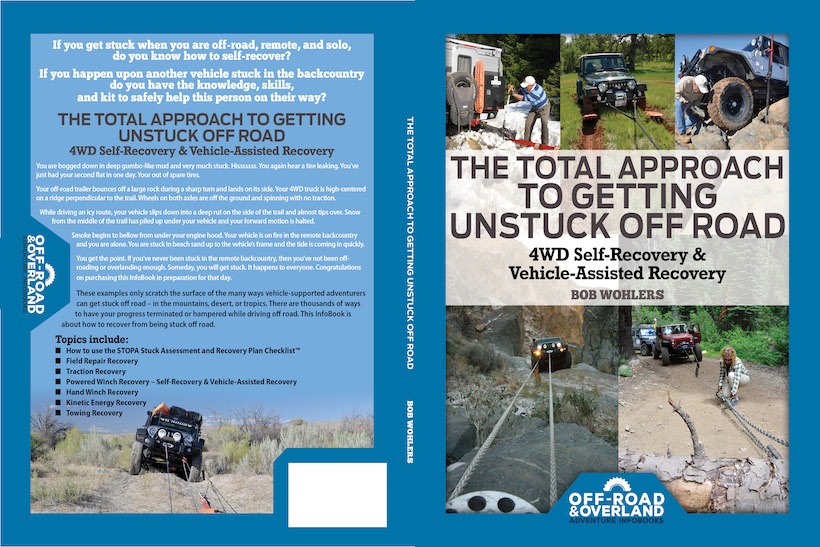
This book can be easily purchased on Amazon by clicking HERE. Bob also has two other 4WD specific books available on Amazon, each designed to help protect people, vehicles, and the environment: 1) Raising Your 4WD vehicle Off Road & In-Field Tire Repair 2) Live Long to Wander – Basic Survival for Vehicle-Supported Adventures To learn more about Bob Wohler, visit his website www.DiscoverOffRoading.com.
Off-Road Recovery:
Categories & Types
For this article series, it’s important to first define off-road recovery. Recovery is a generic term used by off-roaders to define how to get a 4WD vehicle going again once loss of traction or mechanical malfunction halts all vehicular motion. Recovery from being stuck means to get rolling again – to continue self-powered movement or to be towed by another functional vehicle.
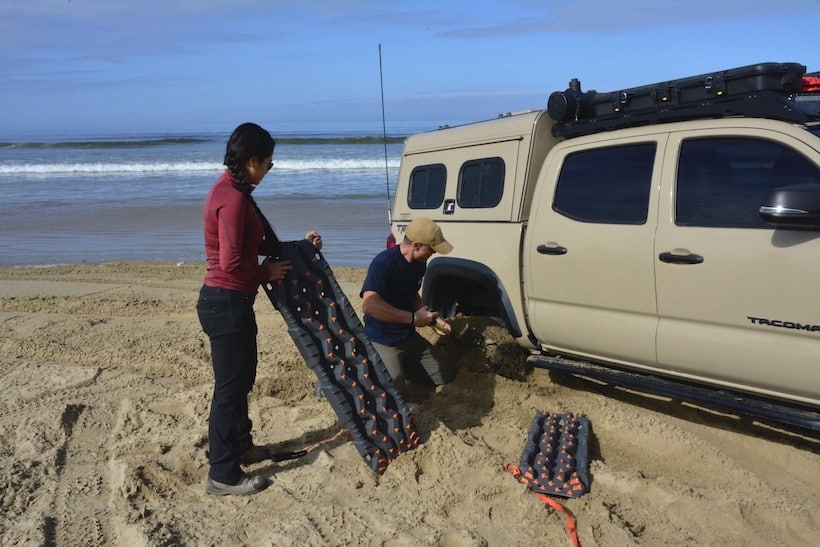
As with most broad subjects, off-road recovery can be divided into smaller categories and situations. To intelligently examine the most common off-road recovery methods used to get unstuck, unbogged, and moving again, an easily remembered synopsis in chart form is helpful. The chart shown in this article summarizes the most common recovery methods.
Two Primary Categories of Off-Road Recovery
All off-road recovery efforts can be divided into two primary categories. An off-road backcountry recovery effort may:
- Use another vehicle = Vehicle-Assisted Recovery, or
- Not use another vehicle = Self-Recovery.
Self-recovery means getting unstuck (“recovered”) without the motive assistance of other vehicles. Vehicle-assisted recovery means getting unstuck (“recovered”) with the motive assistance of one or more unstuck, working vehicles. Of course, there are hybrid situations.
Six Types of Off-Road Recovery
Within these two primary recovery categories, there are essentially six very different types of off-road recovery. The following is an overview of the content in my entire book, The Total Approach to Getting Unstuck. Let’s briefly look at each type.
Field Repair Recovery
The act of field repair recovery does not necessarily require the motive power of another vehicle. It is essentially a form of self-recovery when viewed from the perspective of being solo and remote in the backcountry. Other vehicles may be present, and their occupants may even help or loan you tools and spare parts, but rarely do you need their actual vehicle to assist you (unless they have to tow you out – then it’s vehicle-assisted recovery).
The various aspects of extensive vehicle-specific powertrain and electrical repairs are beyond the scope of my book. Of course, it would be nice if we all could become certified vehicle repair technicians. For most recreational off-roaders however, this is not typically the case. Specific to field repair recovery, this book doescover the narrower, but very important topics of:
- Fire extinguishing
- The basics of in-field welding
- Battery jumping by portable emergency units
- In-field tire repairs
Since these are generic topics and not dependent on vehicle model specificity, off-roaders should have some experience in these four forms of field repair recoveries.
It should be noted here, however, the more repairs and maintenance you perform at home on your vehicle, the more you learn. Knowing how to perform some in-field repairs helps you become increasingly self-reliant in the field. This is especially true of suspension and power train maintenance and repairs. Further, unless necessary, avoid having aftermarket parts added to your vehicle by a mechanic. The more you personally do to your vehicle, the greater familiarity you have with it should something breakdown in the field.
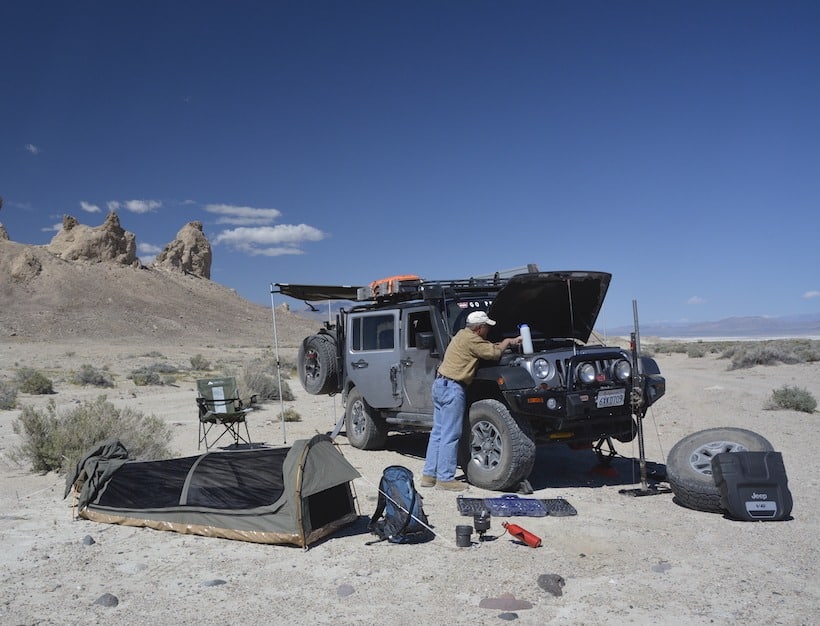
Traction Recovery
Traction recovery can include engaging or using any traction-aiding strategy, equipment, or mechanical traction control system or device. Traction-aiding strategies include airing down tires, trail reconstruction or reconfiguration, solving a cross-axle traction problem, solving a high center, and moving a vehicle sideways on a trail to better traction. Traction-aiding equipment includes traction boards, mats, bridging ladders, snow chains, and even a simple shovel. Mechanical traction control systems (e.g., electronic traction control, downhill assist) or devices (e.g., sway bar release, differential lockers) can assist with traction recovery, but are best used to help you keep from getting stuck in the first place.
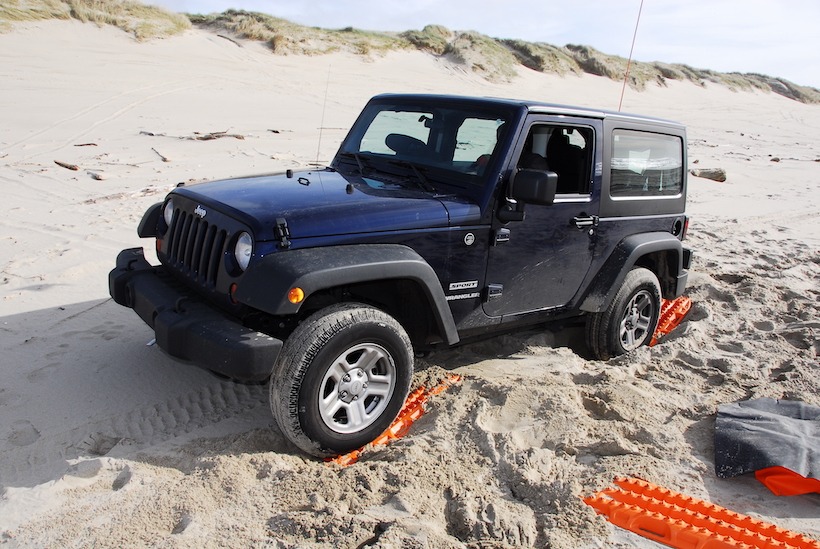
Since the act of traction recovery does not necessarily require the motive power of another vehicle, it is essentially a form of self-recovery when viewed from the perspective of being solo and remote in the backcountry. When you are stuck in the remote backcountry, using traction recovery strategies and equipment should be a major first consideration.
Powered Winch Recovery
Powered winch recovery uses vehicle-mounted electric or hydraulic powered winches; it can be used for either self-recovery OR vehicle-assisted recovery. If you have a functional winch attached to your vehicle, you can perform self-recovery. If your winch doesn’t work, it is attached to the wrong end of your vehicle, or you don’t have one and another vehicle does, then powered winch recovery is vehicle-assisted. Powered winch recovery is the only type of recovery present in each category – self-recovery AND vehicle-assisted. It is this fact that makes winching very special when stuck off road. The fact that powered winching can be for self-recovery and vehicle-assisted recovery emphasizes the reason why most off-roaders believe a winch is an essential piece of equipment.
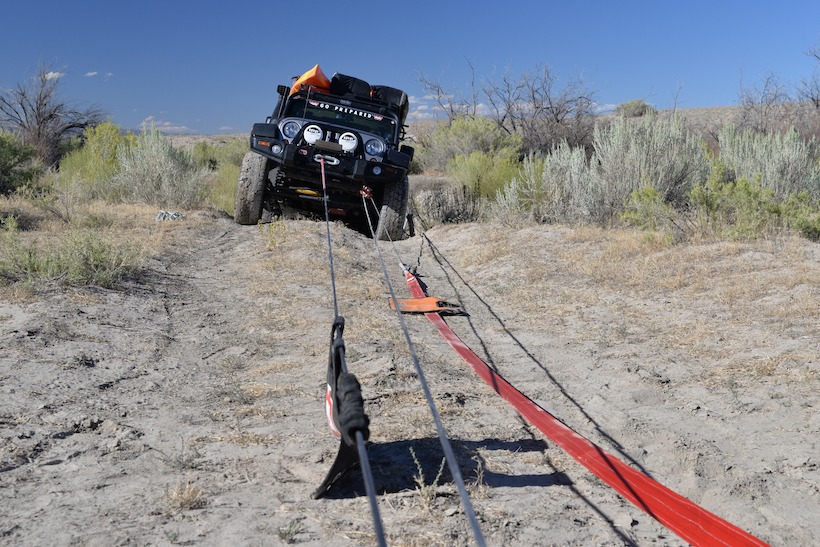
Hand Winch Recovery
This type of self-recovery can include the use of any hand winch, such as the Hi-Lift Jack, the More Power Puller, or in some cases a simple but stout come-along. As you’ll discover in my book, hand winching can be valuable even if you have a powered winch on your front bumper and want to winch your vehicle backwards.
Kinetic Energy Recovery
This is a vehicle-assisted recovery effort only, as it requires the motive power of a non-stuck vehicle. Kinetic energy recoveries use a stretchable (nylon) kinetic energy recovery rope (KERR), or kinetic energy recovery strap (KERS) between a stuck and a recovery vehicle.
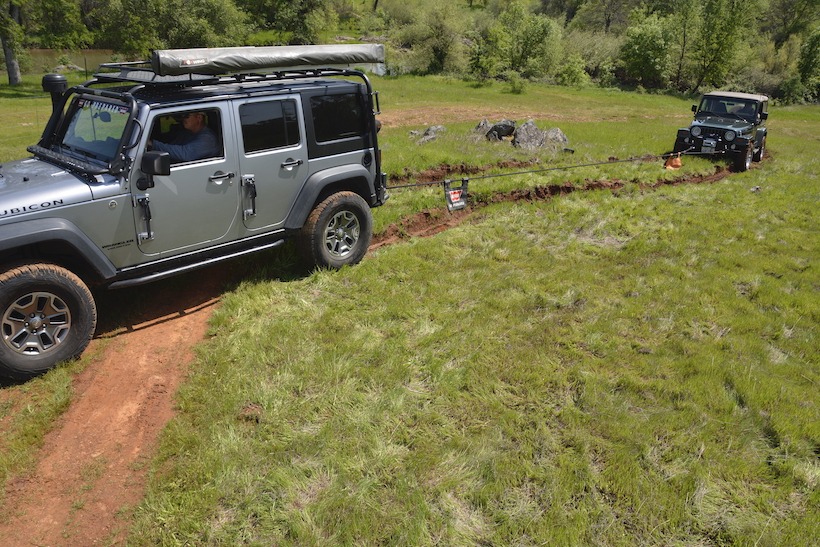
Towing Recovery
This type of vehicle-assisted recovery is the extraction of a dysfunctional 4WD out of the backcountry by either a commercial tow truck or recreational 4WD vehicle. Vehicle-assisted battery jumps often come from tow trucks or other 4WD vehicles, so they are included in this type of recovery.
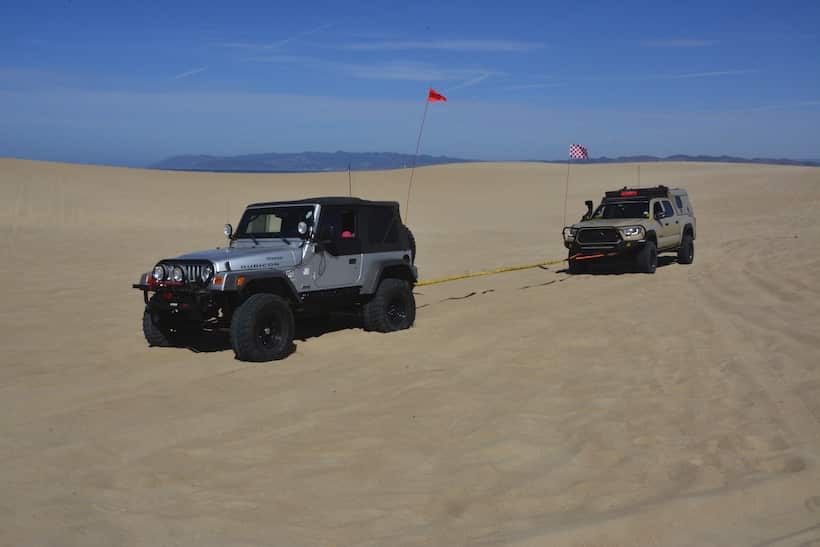
To be a more expert off-roader or overlander, you need to know how to safely and effectively perform all six types of recovery. Being capable in the remote backcountry gives you comfort and confidence as you tackle challenging terrain.
Knowing how to recover stuck vehicles is important not only for yourself, but also for those you might find on the trail that need a helping hand. As any seasoned overlander will tell you, you will use your recovery knowledge, skills, and equipment more on others than you will on yourself. I can tell you from first-hand experience, it’s a joy to help someone on their way when they are stuck and without hope in the remote backcountry. Think beyond yourself. Be a “lifter” not a “leaner.”
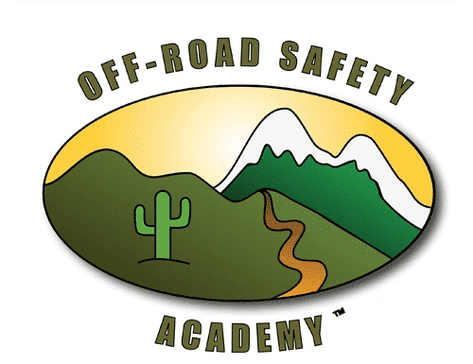
Total Recovery Approach to
Getting Unstuck Off Road™
| Self-Recovery | Vehicle-Assisted Recovery |
| Field Repair Recovery * Fire Extinguishing * Portable Emergency Battery Jumps * In-Field Tire Repairs * In-Field Welding * Powertrain Repairs – Motor, Transmission, Transfer Case, Drive Shafts, Axle Assemblies, Steering and Suspension Components | Powered Winch Recovery (Winch is mounted on the recovery vehicle) |
| Traction Recovery * Engaging 4WD * Increasing Tire Traction – Using Traction Boards, Mats, Bridging Ladders – Using Snow Chains – Airing Down Tires – Trail Reconstruction or Reconfiguration – Solving a High Center – Moving a Vehicle Sideways on a Trail – Solving Cross-Axle Low Traction – Engaging Electronic Traction Control Systems – Engaging Lockers – Disengage Front Sway Bar | Kinetic Energy Recovery * Using Kinetic Energy Recovery Ropes (KERR) * Using Kinetic Energy Recovery Straps (KERS) |
| Powered Winch Recovery (Winch is mounted on the stuck vehicle) Hand Winch Recovery (Winch is used to recover stuck vehicle) | Towing Recovery * By Non-Commercial 4WD Vehicle * By Commercial Tow Truck * Vehicle-Assisted Battery Jumps |
- The Total Approach of Getting Unstuck Off Road – $59.95 BUY HERE
- Live Long to Wander: Basic Survival for Vehicle-Supported Adventures – $25.95 BUY HERE
- Raising Your 4WD Vehicle Off-Road & In-Field Tire Repair – $44.95 BUY HERE
Check out more Training Articles HERE:
________________________________________________________





